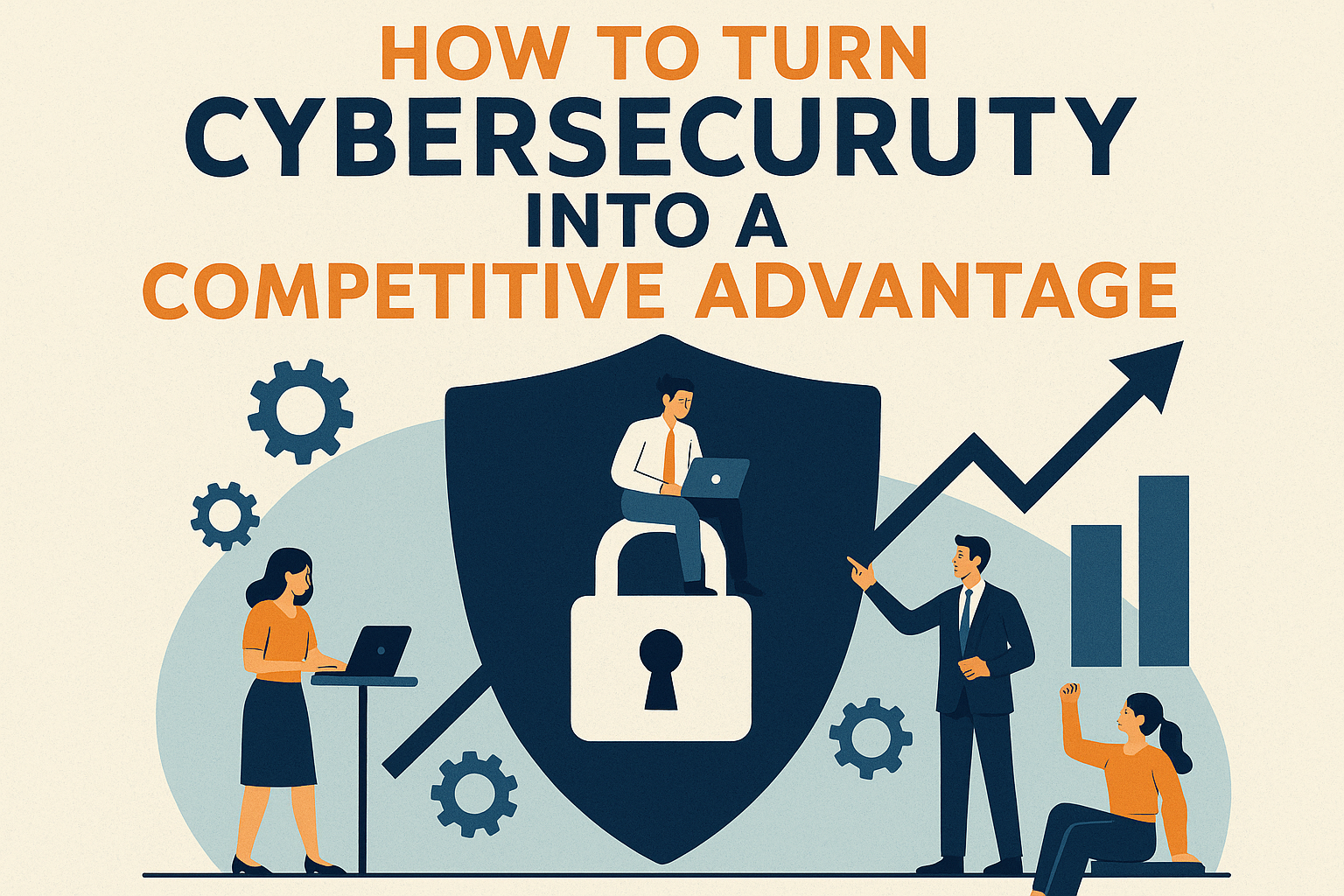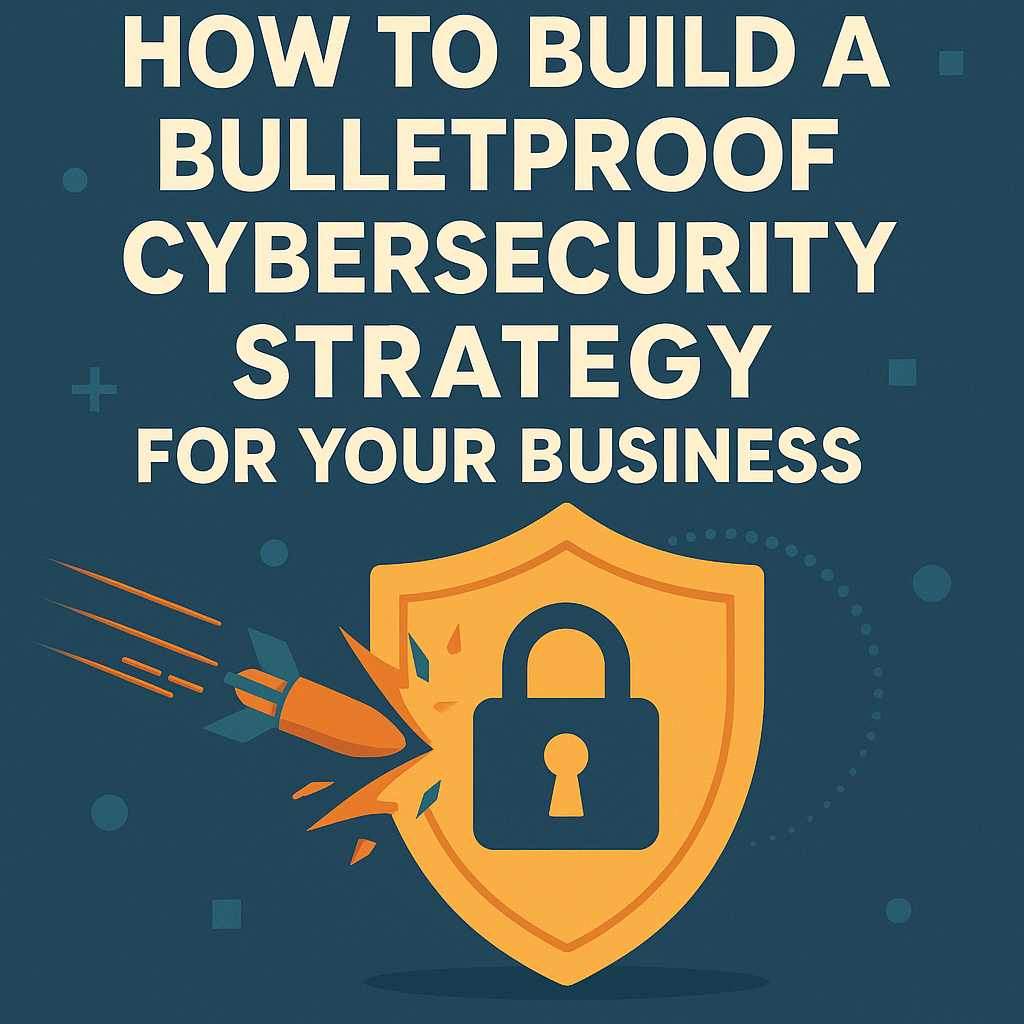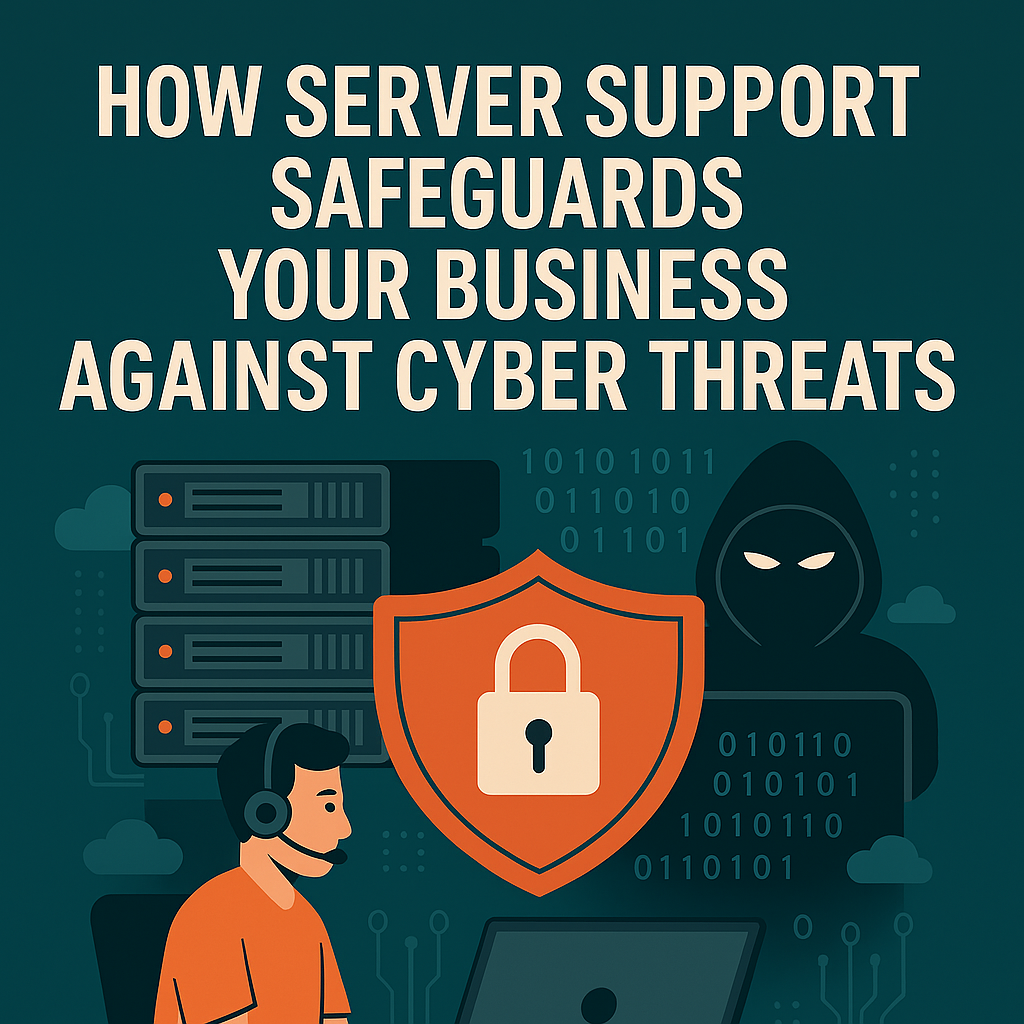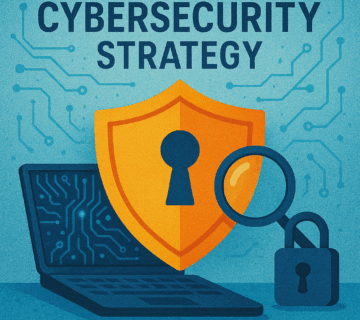How to Turn Cybersecurity Into a Competitive Advantage

In digital-first economy, cybersecurity has evolved from a necessary cost center to a strategic business enabler. Organizations that master the art of transforming their security posture into a competitive differentiator position themselves for sustained growth and market leadership.
Understanding Cybersecurity as a Strategic Asset
The Paradigm Shift from Cost to Value
Traditional approaches to cybersecurity often view it as an operational expense—a necessary evil that protects against threats but doesn’t directly contribute to revenue. This mindset fundamentally misunderstands cybersecurity’s potential impact on business outcomes.
Forward-thinking organizations recognize that robust cybersecurity capabilities create tangible business value through enhanced customer trust, operational efficiency, and market positioning. Whether implementing affordable cyber security service panchkula solutions or comprehensive enterprise programs, when security becomes integrated into core business processes, it transforms from a defensive measure into an offensive capability that drives growth.
Building Trust Through Security Excellence
Trust represents the cornerstone of modern business relationships. Organizations that demonstrate superior cybersecurity practices naturally attract customers, partners, and stakeholders who value data protection and operational reliability.
This trust manifests in multiple ways: customers feel confident sharing sensitive information, partners prefer collaboration with secure organizations, and investors recognize the reduced risk profile of well-protected companies. The cumulative effect creates a sustainable competitive moat that’s difficult for competitors to replicate quickly.
Key Strategies for Competitive Cybersecurity Advantage
1. Security-First Product Development
Integrating security considerations into product design from the earliest stages creates inherently more secure offerings. This approach, known as “security by design,” ensures that protective measures become fundamental product features rather than afterthoughts.
Organizations implementing security-first development practices often find their products naturally appeal to security-conscious customers. This built-in advantage becomes particularly valuable in enterprise markets where security requirements significantly influence purchasing decisions.
2. Transparent Security Communications
Proactive communication about security measures, certifications, and incident response capabilities builds confidence among stakeholders. Organizations that openly discuss their security posture—within appropriate boundaries—demonstrate confidence in their protective capabilities.
This transparency extends to security incident handling. Companies that respond to security events with clear, honest communication often emerge with stronger reputations than those attempting to minimize or hide security challenges.
3. Compliance Excellence as Market Enabler
Achieving and maintaining compliance with relevant security standards and regulations opens doors to new markets and customer segments. Organizations that exceed minimum compliance requirements often find themselves preferred vendors for security-sensitive projects.
Advanced compliance capabilities enable participation in government contracts, enterprise partnerships, and international markets that require specific security certifications. This expanded market access translates directly into revenue opportunities unavailable to less secure competitors.
Implementing Cybersecurity for Business Growth
Developing a Security-Conscious Culture
Creating an organizational culture that prioritizes security awareness and best practices ensures consistent security behavior across all business functions. This cultural foundation supports sustainable security practices that adapt and evolve with changing threats. Many organizations partner with managed cyber security providers panchkula to establish these cultural foundations while maintaining cost-effective operations.
Security-conscious cultures typically demonstrate higher employee engagement with security protocols, reduced human error rates, and faster identification of potential security issues. These improvements contribute to overall operational efficiency and reduced security incidents.
Investing in Advanced Security Technologies
Strategic investments in cutting-edge security technologies can provide significant competitive advantages. Organizations that adopt emerging security solutions early often gain insights and capabilities that competitors lack.
Advanced security technologies also enable automation of routine security tasks, freeing skilled professionals to focus on strategic initiatives. This efficiency gain allows security teams to contribute more directly to business objectives while maintaining superior protective capabilities.
Measuring Security ROI and Business Impact
Establishing clear metrics that connect security investments to business outcomes helps justify continued investment and demonstrates security’s value to organizational leadership. A comprehensive cybersecurity risk assessment panchkula approach provides the foundation for these measurements, which should encompass both risk reduction and business enablement aspects of security programs.
Effective security metrics might include customer retention rates, partner satisfaction scores, time-to-market improvements, and operational efficiency gains. By tracking these broader business impacts, organizations can optimize their security investments for maximum competitive advantage.
Real-World Applications and Success Stories
Market Differentiation Through Security Leadership
Companies across various industries have successfully leveraged superior security capabilities to capture market share and command premium pricing. These organizations typically invest heavily in security infrastructure, personnel, and processes that exceed industry standards.
The resulting security leadership position enables these companies to pursue opportunities that competitors cannot access due to security limitations. This advantage compounds over time as security capabilities become increasingly important to customers and partners.
Operational Efficiency Through Security Integration
Organizations that integrate security seamlessly into operational processes often discover significant efficiency improvements. Automated security controls, streamlined compliance processes, and secure-by-default configurations reduce operational overhead while maintaining strong protective capabilities.
These efficiency gains free resources for innovation and growth initiatives while simultaneously improving security posture. The dual benefit of reduced costs and enhanced security creates a compelling competitive advantage.
Building Long-Term Competitive Advantages
Planning Your Security Foundation
Before implementing advanced security measures, organizations must first understand how to build a cybersecurity strategy that aligns with business objectives. This strategic foundation ensures that security investments contribute meaningfully to competitive positioning while addressing genuine organizational risks.
Leveraging External Expertise
Many organizations find that cybersecurity outsourcing services provide access to specialized expertise and advanced capabilities that would be difficult to develop internally. This approach allows companies to focus on core business activities while maintaining superior security posture through professional security management.
Comprehensive Security Service Models
Outsourced cyber security services enable organizations to access enterprise-grade security capabilities without the overhead of maintaining full internal security teams. These services typically include 24/7 monitoring, incident response, threat intelligence, and compliance management, providing comprehensive protection while allowing internal teams to focus on strategic initiatives.
Advanced Threat Detection Services
Organizations seeking to stay ahead of sophisticated threats often implement outsource cyber security threat hunting services that provide proactive threat identification and response capabilities. These advanced services use artificial intelligence and human expertise to identify potential threats before they impact business operations.
Strategic Security Partnerships
Developing strategic partnerships with leading security vendors, research institutions, and industry organizations can provide access to cutting-edge security intelligence and capabilities. These partnerships often result in early access to emerging technologies and threat intelligence.
Strategic security partnerships also enable knowledge sharing, joint development projects, and collaborative threat response capabilities that enhance overall security effectiveness. The network effects of these partnerships create additional competitive advantages.
Overcoming Common Implementation Challenges
Balancing Security and Usability
One of the most significant challenges in leveraging cybersecurity for competitive advantage involves maintaining user-friendly experiences while implementing robust security measures. Organizations must carefully balance security requirements with operational efficiency and user satisfaction.
Successful approaches typically involve user-centered security design, comprehensive training programs, and iterative refinement based on user feedback. This balance ensures that security measures enhance rather than hinder business operations.
Managing Security Investment Costs
Strategic security investments require careful financial planning and clear return-on-investment justification. Organizations must prioritize security spending based on business impact potential and risk reduction effectiveness.
Cost management strategies might include phased implementation approaches, leveraging existing infrastructure, and focusing on high-impact security initiatives. These approaches help maximize security investment effectiveness while maintaining fiscal responsibility.
Future Trends in Competitive Cybersecurity
Artificial Intelligence and Machine Learning Integration
The integration of AI and ML technologies into cybersecurity platforms promises to revolutionize threat detection, response automation, and predictive security analytics. Organizations that successfully implement these technologies early will likely gain significant competitive advantages.
AI-driven security solutions can process vast amounts of security data, identify subtle threat patterns, and automate response actions faster than human-operated systems. These capabilities enable more effective threat prevention and faster incident response.
Zero Trust Architecture Implementation
Zero Trust security models, which assume no implicit trust within network boundaries, represent a fundamental shift in cybersecurity approach. Organizations implementing comprehensive Zero Trust architectures often achieve superior security posture while enabling more flexible operational models.
Zero Trust implementations typically support remote work capabilities, cloud adoption, and digital transformation initiatives while maintaining strong security controls. This combination of security and operational flexibility creates competitive advantages in rapidly changing business environments.
Measuring Success and Continuous Improvement
Key Performance Indicators for Security Advantage
Establishing appropriate KPIs for cybersecurity competitive advantage requires metrics that capture both security effectiveness and business impact. These measurements should demonstrate how security investments contribute to organizational success.
Relevant KPIs might include security incident reduction rates, customer satisfaction scores, partner confidence metrics, and market share growth in security-sensitive segments. These comprehensive measurements provide clear evidence of security’s competitive value.
Continuous Monitoring and Adaptation
Maintaining cybersecurity competitive advantage requires ongoing monitoring of threat landscapes, competitive activities, and business environment changes. Organizations must continuously adapt their security strategies to maintain leadership positions.
This adaptive approach involves regular security assessments, competitive analysis, and strategic planning updates. The resulting agility ensures that security capabilities remain aligned with business objectives and competitive requirements.
Frequently Asked Questions
How long does it take to develop cybersecurity competitive advantage?
Developing meaningful cybersecurity competitive advantage typically requires 12-24 months of sustained investment and strategic focus. Initial improvements in security posture can be achieved within 3-6 months, but building comprehensive competitive advantages requires longer-term commitment to security excellence.
The timeline depends on factors such as current security maturity, available resources, industry requirements, and competitive landscape dynamics. Organizations with existing security foundations can often achieve competitive advantages faster than those starting from minimal security capabilities.
What are the most cost-effective ways to gain cybersecurity competitive advantage?
The most cost-effective approaches typically involve leveraging existing resources, focusing on high-impact security initiatives, and implementing security measures that provide dual benefits for protection and operational efficiency. Priority areas often include employee training, process optimization, and strategic technology investments.
Organizations should focus on security initiatives that directly support business objectives while reducing operational risks. This approach maximizes return on security investments while building sustainable competitive advantages.
How can small businesses compete with larger organizations in cybersecurity?
Small businesses can compete effectively by focusing on agility, specialized expertise, and customer-centric security approaches. While they may lack the resources for comprehensive security infrastructure, they can often implement security measures more quickly and provide more personalized security services.
Small businesses should leverage cloud-based security solutions, focus on niche market segments with specific security requirements, and emphasize their ability to provide customized security solutions that larger competitors cannot match.
What role does employee training play in cybersecurity competitive advantage?
Employee training plays a crucial role in cybersecurity competitive advantage by creating security-aware cultures, reducing human error risks, and enabling rapid adoption of new security technologies. Well-trained employees become security assets rather than potential vulnerabilities.
Comprehensive security training programs should cover threat awareness, incident response procedures, secure work practices, and emerging security technologies. This training foundation supports all other security initiatives and creates sustainable competitive advantages.
How do you measure the ROI of cybersecurity investments for competitive advantage?
Measuring cybersecurity ROI for competitive advantage requires tracking both traditional security metrics and business impact indicators. Key measurements include reduced security incidents, improved customer trust scores, increased market access, and enhanced operational efficiency.
Organizations should establish baseline measurements before implementing security initiatives and track improvements over time. This approach provides clear evidence of security’s contribution to competitive positioning and business success.
What are the biggest mistakes companies make when trying to use cybersecurity for competitive advantage?
Common mistakes include treating security as purely a technical issue, implementing security measures without considering business impact, failing to communicate security capabilities effectively, and not aligning security investments with business objectives.
Organizations should avoid focusing solely on compliance requirements, neglecting user experience considerations, and implementing security measures without proper change management. These mistakes can undermine security effectiveness and limit competitive advantages.
How important is third-party security certification for competitive advantage?
Third-party security certifications provide valuable validation of security capabilities and often serve as market differentiators. Certifications such as ISO 27001, SOC 2, and industry-specific standards demonstrate commitment to security excellence and enable access to security-conscious market segments.
However, certifications should be viewed as minimum requirements rather than ultimate goals. Organizations seeking competitive advantage should exceed certification requirements and continuously improve their security posture beyond minimum standards.
Can cybersecurity competitive advantage be sustained long-term?
Cybersecurity competitive advantage can be sustained long-term through continuous innovation, strategic investments, and adaptive security strategies. However, maintaining advantage requires ongoing commitment to security excellence and regular adaptation to changing threat landscapes.
Organizations must view cybersecurity competitive advantage as a dynamic capability that requires continuous development rather than a static achievement. This approach ensures long-term sustainability and continued competitive benefits.








No comment